Achieving Digital Transformation in the Marine Industry

Like so many other industries in transportation, the marine industry is being challenged on multiple fronts—from a shortage of manpower and emerging digital technologies to sustainability requirements. In the face of these growing pressures, ship designers increasingly rely on digital transformation to stay competitive and deliver higher-quality products. Digital transformation offers many solutions across a ship’s lifecycle, from design and crew training to interconnectivity and automation…
Marine News' Top Boats of 2021
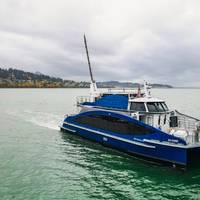
Sea Change - America’s first hydrogen powered ferrySWITCH Maritime’s new 70-foot passenger ferry Sea Change is navigating uncharted waters as the United States’ first zero-emissions, hydrogen fuel cell-powered, electric-drive ferry.The pioneering aluminum newbuild, constructed by Bellingham, Wash. shipbuilder All American Marine, Inc. (AAM), has been completed and was launched this summer, though permitting of hydrogen fuel systems for maritime vessels is still being worked out with the U.S. Coast Guard.“Legislation and laws for passenger safety did not exist yet for this type of vessel.
Marine Autonomy: The Future is Being Revealed

Automation, where routine tasks are handled by machines, has been talked about throughout maritime sectors for much of the 21st Century. Initially touted by suppliers of engine room and bridge management systems for its cost savings (with reduced manning levels), its value proposition was then infused with risk management (reduced human error) and remote operations, where vessels could be managed from a shoreside control room. In early 2017, Rolls Royce —an early proponent of unmanned operations—teamed with tug operator Svitzer on a remotely operated vessel…
Nichols Brothers Delivers Fourth Tug to Foss
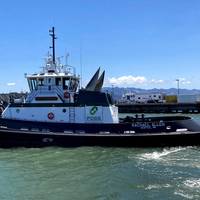
Nichols Brothers Boat Builders (NBBB) said it has delivered the final vessel in a series of four new tugs for Foss Maritime.The ASD-90 tractor tugs Jamie Ann, Sarah Avrick, Leisa Florence and Rachael Allen were completed and delivered between April 2020 and June 2021. Foss, a division of the Saltchuk company, will station two of the vessels in Los Angeles/Long Beach, while the other two vessels will be in the San Francisco Bay providing escort and assist services to large tankers and containerships calling on the California ports.The series' fourth vessel…
Foss to Operate Autonomous Harbor Tug
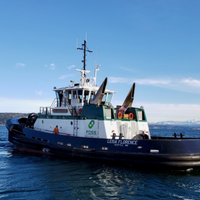
Foss Maritime’s newest vessel will be the first U.S.-flag harbor tug to integrate autonomous systems in real-world commercial operations.Launched on April 29 and scheduled for delivery in May 2021, the newly built 90-ton bollard pull Rachael Allen—the fourth in a series of ASD-90 Z-drive tractor tugs being built at Nichols Brothers Boat Builders, in Freeland, Wash.—will feature Sea Machines Robotics’ SM300 autonomous-command and -control system. The system's capabilities include transit autonomy…
Grimaldi Group Orders Six RoRo Ships
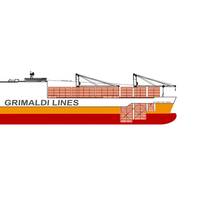
The Grimaldi Group said it signed an order contract worth more than $500 million for the construction of six new ro/ro multipurpose vessels at Hyundai Mipo Dockyard Co. Ltd (Ulsan) in South Korea.With a length of 250 meters, a beam of 38 meters and a deadweight of 45,684 tonnes, the six newbuilds are expected to be delivered for Grimaldi's Neapolitan Group between the first months of 2023 and the end of 2024. The vessels will replace older 25-year-old-plus tonnage and will be deployed between North Europe and West Africa…
ABS Publishes Subsea Mining Guide
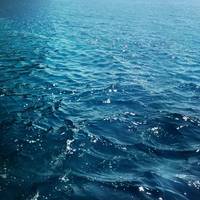
ABS has published the Guide for Subsea Mining, detailing class requirements for the design, construction, installation and survey of mobile offshore mining units.The publication, which ABS is calling an industry-first, comes as global interest in resources on the seafloor grows to support the emerging low carbon economy.“The world demand for metals required for new forms of transportation and electrical storage is increasing. Metals such as copper, cobalt, nickel and manganese exist on land, but are increasingly difficult to extract sustainably.
Autonomous Shipping – Cyber Hazards Ahead
![A look at the typical areas most frequently seen as the scene of common accidents on board workboats. (source: European Maritime Safety Agency [EMSA])](https://images.marinelink.com/images/maritime/w200h200c/a-look-at-the-typical-105797.jpg)
If autonomous vessels are the future of maritime shipping, then cyber threats may be its Achilles heel. Congested shipping, restricted visibility, limited maneuverability, and intensive docking activities all contribute to port hazards – 42 percent of EU reported marine accidents (injury/death/damage to ships) took place in port areas and 44 percent of workboat fatalities occurred on Tugs. Autonomous shipping should provide numerous benefits including increased safety by relieving crewmembers of unsafe and repetitious tasks.
Kongsberg, Robert Allan Drive the Future of Marine Firefighting
The first vessel in the series will be the 20 meter RALamander 2000, featuring FiFi1 capability, pumping capacity of 2400 m3/hour and with optional foam capabilities. Vancouver based naval architects and marine engineers Robert Allan Ltd., and international marine technology specialist Kongsberg Maritime are collaborating on the development of a radically new remotely-operated fireboat that will allow first responders to attack dangerous port fires more aggressively and safer than ever before. Like other autonomous efforts underway on the waterfront, this concept tackles and solves the so-called “3D’s” – dull, dirty and dangerous – of workboat drudgery.
Meet the Future of Marine Firefighting
Kongsberg, Robert Allan drive the future of marine fighting. The first vessel in the series will be the 20 meter RALamander 2000, featuring FiFi1 capability, pumping capacity of 2400 m3/hour and with optional foam capabilities. Vancouver based naval architects and marine engineers Robert Allan Ltd., and international marine technology specialist Kongsberg Maritime are collaborating on the development of a radically new remotely-operated fireboat that will allow first responders to attack dangerous port fires more aggressively and safer than ever before. Like other autonomous efforts underway on the waterfront, this concept tackles and solves the so-called “3D’s” – dull, dirty and dangerous – of workboat drudgery.
The Day of the Unmanned Ship is Dawning
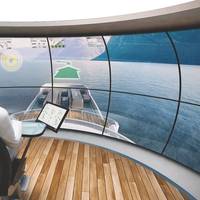
While debates rage in regards to safety, insurance and cyber security, the tech powering autonomous maritime operations continues to power ahead.Advances in sensor technology, data analytics and bandwidth-to-shore are fundamentally changing the way shipping works. And as operations are digitalized, they become more automated, Dr. Pierre C. Sames, Director of Group Technology & Research at class society DNV GL, has stated.Governments around the world are looking into unmanned shipping…
Connectivity for Brown Water Operations
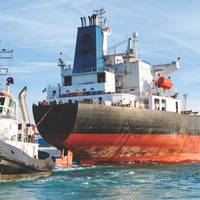
Growing options emerge for ever-increasing data and Comms demand. In the United States alone, 625 million tons of cargo is transported along the more than 12,000 miles of commercially navigable waterways each year, moving vital commodities to and from 38 of the nation’s 50 states. The advent of subchapter M has raised the bar significantly for as many as 5,000 inland vessels, both in terms of safety and the need to document and more closely control this tonnage. At the same time, domestic coastal transport and offshore energy support vessels also face growing communications requirements.
ClassNK CMAXS for Two MOL Ships
ClassNK Consulting Service Co., Ltd. developed next-generation diagnostic monitoring system “ClassNK CMAXS” has been chosen by Mitsui O.S.K. Lines (MOL) for installation on two more ships operated by the company. The system is now installed on a total of six MOL-operated ships. The two ships are installed with CMAXS e-GICSX, a system which monitors electrically controlled main engine supplied by Mitsui Engineering & Shipbuilding Co., Ltd., and CMAXS LC-A for auxiliary engines supplied by DAIHATSU DIESEL MFG. CO, LTD. Both CMAXS systems operate simultaneously, gathering information from VDR, data logger and main engine. This information (Big Data) is consolidated on a common platform for analysis and the potential future improvement.
DNV GL’s New Veracity Industry Platform Unlocks Potential of Big Data
DNV GL is launching a new industry data platform – “Veracity” – to help the maritime industry improve its profitability and explore new business models through digitalization. The Veracity industry data platform is designed to help companies improve data quality and manage the ownership, security, sharing and use of data. By creating frictionless connections between data owners and users, the platform will create new opportunities for improving ship performance and safety, while at the same time reducing operational costs. “As a classification society it is vital for us to always be exploring ways we can help our industry to leverage new technologies to improve the safety and productivity of their assets,” said Knut Ørbeck-Nilssen, CEO DNV GL – Maritime.
Silence Your Ships
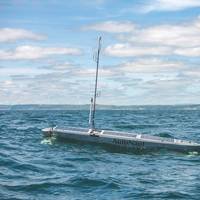
Anthropogenic (manmade) sound is creating havoc among marine mammals and other aquatic species. These creatures have very sensitive hearing, which they rely on to find food and mates and (for some) to communicate and navigate. Sound waves can travel much further and with much less loss of strength in water than in air. In pre-industrial times, the oceans were relatively quiet. Sailing ships generated almost no subsurface noise. A whale’s call could be heard by another whale hundreds of miles away in ambient conditions.
Wärtsilä Propulsion for Seabourn Cruise Vessels
Two new cruise vessels being built for USA based Seabourn Cruise Line will feature a broad assortment of Wärtsilä propulsion, electrical and automation solutions. The ships are to be built at the Fincantieri yard in Italy. The 'Seabourn Encore' is already under construction and the 'Seabourn Ovation' is scheduled to join the Seabourn fleet in 2018. The contracts with Wärtsilä for the vessels' navigation and automation systems were signed in December 2015. The engine orders were signed in late 2014 and in the third quarter of 2015. The comprehensive range of Wärtsilä navigation, automation and sensor systems to be installed on these vessels includes the Wärtsilä Nacos Platinum and Wärtsilä Valmatic Platinum systems.
Ship Operating Costs on the Rise
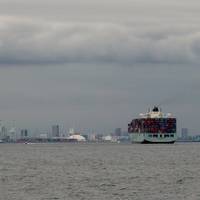
The survey responses, gathered primarily from key players in the international shipping industry, predominantly shipowners and managers in Europe and Asia, revealed that vessel operating costs are expected to rise by 2.8 percent in 2015 and by 3.1 percent in 2016. Crew wages are expected to increase by 2.4 percent in 2015 and by 2.3 percent in 2016, with other crew costs thought likely to go up by 2 percent and 1.9 percent, respectively, for the years under review. The cost of repairs and maintenance is expected to escalate by 2.3 percent in 2015 and by 2.4 percent in 2016…
NZ Report: Human Error to Blame for Rena Grounding
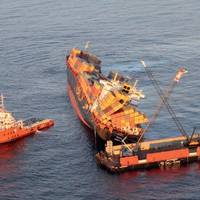
New Zealand's Transport Accident Investigation Commission (TAIC) published its final report into the grounding of containership Rena in October 2011. The TAIC’s investigation found that the grounding was a result of improper crew practices, and that equipment/machinery malfunction played no part in the incident. According to the report, the Liberian-registered containership Rena had left the New Zealand port of Napier at 10:20 a.m. on October 4, 2011 bound for the New Zealand port of Tauranga. The master had given an estimated time of arrival at the Tauranga pilot station of 3 a.m.
SEEMP: Potential Win-win for Commercial Vessels
SEEMP can make a fleet more competitive in a difficult business environment while reducing its impact on the environment. In January 2013, the International Maritime Organization (IMO) put into force new regulations intended to improve the energy efficiency of ships over 400 gross tonnes (gt) on international voyages, including a requirement to keep on board a ship-specific Ship Energy Efficiency Management Plan (SEEMP). This initiative is intended to reduce ship greenhouse gas (GHG) emissions by encouraging ship operators to reduce energy consumption. Since that time, there has been much discussion within the shipping industry about the potential domestic enforcement of the SEEMP. Recently, the U.S.
Internet at Sea: Staying Connected
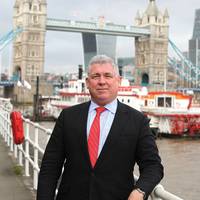
The maritime industry is at a crossroads, with a dearth of next-generation talent willing and available for a life at sea, yet increasing demands for efficiency and clarity of operations. At this crossroads lies modern communication technology, the connective tissue that can help to cure many of the industry’s ills, as Frank Coles, President of Inmarsat Maritime, contends. Commercial shipping will always remain a pivotal link in the global transport chain, but the very nature…
New Zealand Charges Fishing Co. for Oil Discharge
Maritime New Zealand (MNZ) has laid three charges against Sanford Ltd. after an investigation into alleged illegal dumping of oil into the sea of New Zealand’s Exclusive Economic Zone from the Korean foreign charter fishing vessel Pacinu, a vessel owned by Juahm Industries operating under charter in New Zealand to Sanford Ltd. Sanford is charged with illegal discharge of a harmful substance – oil – from the vessel (under s237 of the Maritime Transport Act), failing to notify MNZ of the discharge (s238), and failure to notify a pollution incident (s239). The discharge of a harmful substance charge carries a maximum penalty of two years imprisonment or a fine of $200,000.
Knowledge is Power
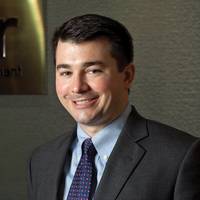
World crude production may rise and fall, but the historical trend shows a steady increase in the price of a barrel of oil, and with it, the price of a ton of fuel. Add the demands of shareholders and charterers to increase operational efficiency and profitability, as well as increasing international pressure to reduce fuel consumption and associated greenhouse gas emissions. It is no wonder that ship owners have seen a steady rise, as well, in the availability of technologies — from ship design to propulsion and HVAC systems to hull coatings — that are purported to reduce fuel consumption.
What’s All the Noise at IMO?

Shipping may think they hear the sound of new regulations as they are slammed onto their desks. What is all the noise concerning noise at IMO? This may very well be the question from ship owners, operators and builders closely following activities at the International Maritime Organization (IMO). In 2013, IMO issued mandatory regulations for shipboard airborne noise and earlier this year IMO internal committees approved new draft guidelines for minimizing underwater noise. Even though the author advised the U.S.





